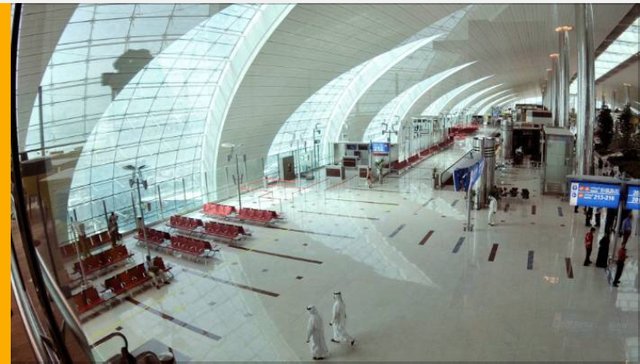
Even though Dubai International Airport is one of the world's largest buildings measured by floor space, it can still feel like an airport in constant catch-up mode, bursting at the seams.
In 2013, its 66.5 million passenger movements made Dubai the world's second busiest international airport after Heathrow - and it's on target to take the number-one spot in 2015.
By 2020, the airport predicts passenger traffic to pass the 100-million mark. Much of that success is down to location. "A third of the world's population lives within four hours' flight time. Stretch that to eight hours flying and you lasso another third," says Julius Baumann, corporate communication manager for Dubai Airports.
Since Qantas now uses Dubai as its major hub for connecting flights aboard Emirates to Europe, Africa and the Middle East, travellers are going to be seeing a lot more of Dubai International Airport. The airport has three terminals and most passengers travelling to and from Australia and New Zealand will arrive and depart from Terminal 3, which is used by all Emirates and Qantas flights.
This terminal has three concourses, with a fourth, Concourse D, to open next year. Concourse C is now used for non-Emirates airlines, which will migrate to Concourse D when it opens. Concourse B is for non-A380 Emirates flights. Typically this will be where a passenger will board or disembark a flight heading for a European port, and depending on when you arrive, it can feel jammed.
The concourse is at its busiest in the early morning, which is when several flights from Australia arrive, with connecting flights to Europe departing from about 7am onwards. The central complex of duty-free shops and food and beverage outlets feeds off a central aisle which is already narrow for its purpose. Passengers passing along it are impeded by retail stalls set along the middle of the aisle.
For passengers looking for something quieter, Concourse B has a pay-for-use Marhaba Lounge, located close to boarding gate B23. This offers the usual executive-lounge array of hot and cold buffet food and beverages and showers. At a cost of $55 for up to four hours' use, the price is steep enough to deter most travellers, and offers a refuge of relative calm.
Passengers with a couple of hours or more between flights have another option in the G-Force Health Club, located one level above the main concourse. At a cost of $42, the health club includes a gym, small heated pool, separate steam rooms for men and women, sauna, showers, towels and toiletries, available 24/7. On the same level is the Timeless Spa, open from 8am to 8pm and offering treatments starting from $102.
Source
Plagiarism is the copying & pasting of others work without giving credit to the original author or artist. Plagiarized posts are considered spam.
Spam is discouraged by the community, and may result in action from the cheetah bot.
More information and tips on sharing content.
If you believe this comment is in error, please contact us in #disputes on Discord
Downvoting a post can decrease pending rewards and make it less visible. Common reasons:
Submit
Hi! I am a robot. I just upvoted you! I found similar content that readers might be interested in:
http://www.traveller.com.au/dubai-international-airport-review-inside-the-secondbusiest-international-airport-12c1ma
Downvoting a post can decrease pending rewards and make it less visible. Common reasons:
Submit